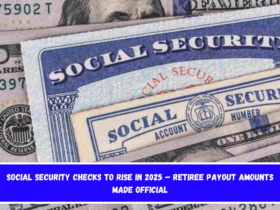If you are a Social Security recipient in the United States, you may be keeping an eye on impending payment dates, especially with the Cost-of-Living Adjustment (COLA) scheduled for 2025. Beginning in January, these payments will be adjusted to balance price rises and maintain the spending power of individuals who rely on them.
The last payment dates for this year are November and December, but the new year will bring a fresh deposit schedule and modifications. According to a recent research conducted by the National Institute on Retirement Security, only 11% of Americans who have not yet retired know how much Social Security payments they would receive when they retire.
How much do Americans know about their Social Security benefits?
This low percentage demonstrates a lack of planning and comprehension of an important aspect of financial stability in old life. Furthermore, 24% of respondents said they were “not very sure” about the amounts they’d be entitled to, while another 22% said they had no idea what their future benefit levels were.
Tyler Bond, the Institute’s Director of Research, highlights that workers can obtain an estimate of their future benefits by going to the Social Security Administration’s (SSA) website. They can open an account and receive a personalized estimate of their expected earnings. Despite the fact that this tool is widely available, most people do not use it, resulting in a substantial information gap that may have an influence on long-term financial planning.
How to find out about your Social Security benefits
For people who want more control over their financial destiny, opening an account on the Social Security Administration’s official website is a good first step. This portal allows customers to access a complete history of contributions, check for inaccuracies, and predict retirement benefits. Anyone over the age of 18 can register in the “My Social Security” section and gain secure access to this information.
Knowing how much you’ll earn in retirement might help you adapt your personal finances and decide whether you need extra income sources, such as pension plans or additional savings. In economically unstable times, understanding your future benefits can mean the difference between a safe retirement and a tighter financial condition.

Social Security payment schedule for 2025
The Social Security Administration has already established the payment schedule for 2025, and keeping these dates in mind might help you budget your expenses. Monthly payments will follow a regular schedule, with particular dates allotted for each month. Social Security retirement payments in 2025
- January: 8, 15, and 22
- February: 12, 19, and 26
- March: 12, 19, and 26
- April: 9, 16, and 23
- May: 14, 21, and 28
- June: 11, 18, and 25
- July: 9, 23, and 30
- August: 13, 20, and 27
- September: 10, 17, and 24
- October: 8, 15, and 22
- November: 12, 19, and 26
- December: 10, 17, and 24
The Cost-of-Living Adjustment: what it is and why it matters
The Cost-of-Living Adjustment, or COLA, is a mechanism employed by Social Security to keep up with inflation and ensure that seniors’ earnings do not erode as the cost of living increases. With the prices of basic commodities and services rising year after year, this adjustment ensures that beneficiaries do not fall behind financially.
The percentage rise in COLA is calculated using consumer price indexes, which track price changes in products and services over time. In 2025, a considerable adjustment is projected to account for recent inflation, ensuring that pensions retain their real worth as prices rise.
Preparing your financial future
Although Social Security is an important source of income for many retirees, knowing how much you’re entitled to might help you make better decisions. Other savings choices, such as pension funds or investments, can help improve financial security.
Retirement planning is about more than simply age; it’s also about knowing how much money you’ll have at that age. Using tools such as the Social Security website to accurately predict future benefits might help you avoid surprises and plan for the future.











Leave a Reply